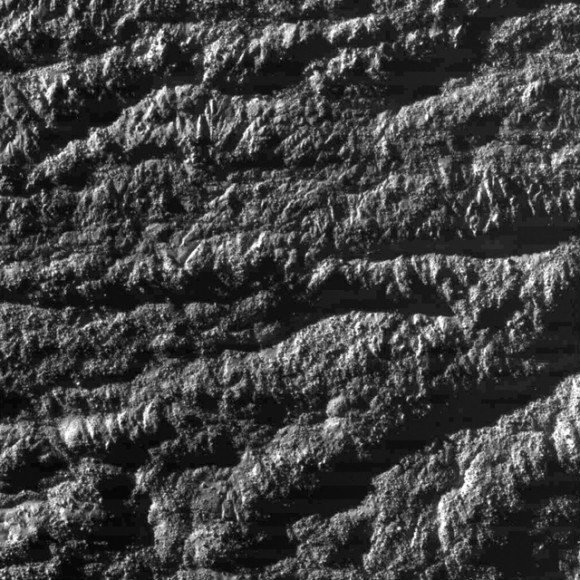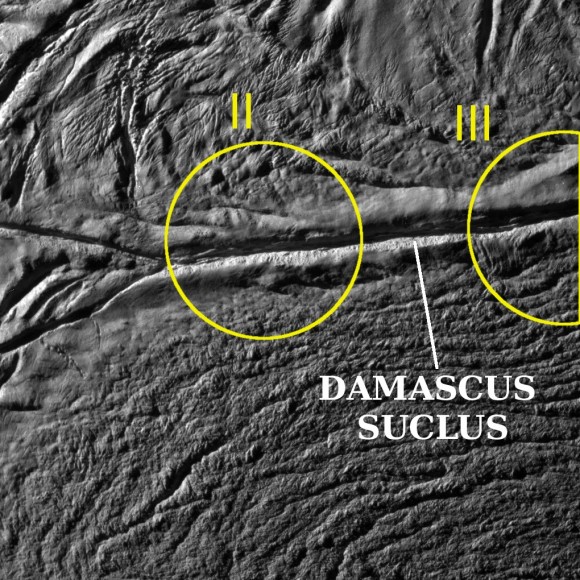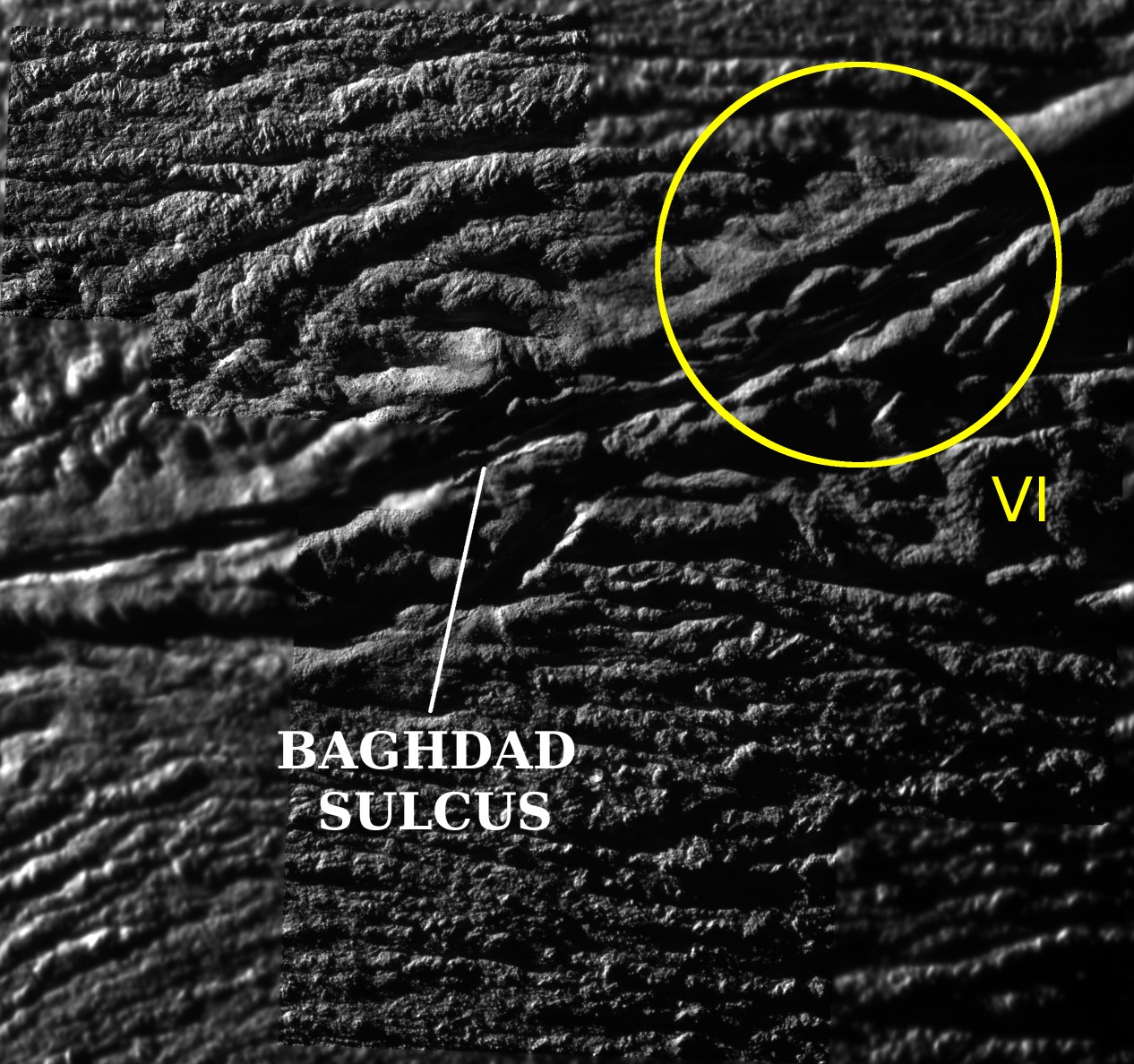[/caption]
The Cassini spacecraft performed another ‘skeet shoot’ over Enceladus’ south pole on Friday, and returned some absolutely stunning images. Or as Carolyn Porco, the imaging team leader for the spacecraft said, “a bounty of positively glorious views of one of the most fabulous places in the solar system.” The resolution of the mosaic shown here is just 12.3 meters per pixel! Visible are large house-sized boulders, and the deep “tiger stripes” from which the plumes of material are being produced. One source of the jets producing the plumes is identified in the upper right on this image. Enjoy these great images now because the next flyby of Enceladus won’t be for another year. And at that time, the sun won’t be shining as predominantly on moon’s south pole, so next year the view of this region of Enceladus will be much dimmer. Here’s more…
This Cassini image was the first and highest resolution ‘skeet shoot’ narrow angle image captured during the October 31st flyby of Enceladus.
The image was taken with the Cassini spacecraft narrow-angle camera on October 31, 2008 at a distance of approximately 1691 kilometers (1056 miles) from Enceladus and at a Sun-Enceladus-spacecraft, or phase, angle of 78 degrees. Image scale is 9 meters (30 feet).

Here’s the 8th image from the flyby using the narrow angle camera The source region for jets II and III are identified. To identify jet source locations on the surface, imaging scientists carefully measured the locations and orientations of individual jets observed along the moon’s limb in Cassini images taken from multiple viewing angles. For each jet measurement, the researchers then computed a curve, or ground track, on the surface of Enceladus along which that jet might lie. The researchers were able to isolate eight areas as jet sources.
The image was taken with the Cassini spacecraft narrow-angle camera at a distance of approximately 5568 kilometers (3480 miles) from Enceladus and at a Sun-Enceladus-spacecraft, or phase, angle of 75 degrees. Image scale is 32 meters (105 feet) per pixel.



skeet skeet skket
very cool.
The labelling of the final image suc(k)(lu)s.
Interesting the plumes do not seem to be visible from close up. Wasn’t the probe supposed to go through the plume? Wonder what it found…
A bit boring, looks more like a sick person with a skin condition.
Very nice. That’ll keep the geologists busy for a while.
Very beautiful.
Yeah, Enceladus suffers from dermatitis
Funny how the “skin” looks smooth near the sulcus (or, as they say, “suclus” ). Obviously not all the material that is spewed up from the vents finds its way to the E ring. I wonder what’s the geometry here, though. I.e.: are the plumes really vertical? Do they bend a little to the sides? Or along the faults?
). Obviously not all the material that is spewed up from the vents finds its way to the E ring. I wonder what’s the geometry here, though. I.e.: are the plumes really vertical? Do they bend a little to the sides? Or along the faults?
This little world is amazing.
Amazing resolution and a tribute to image motion compensation. There is no hint of anything like a vent point source, and no debris fall from ejected material is evident. I’ll put my money on ion sputtering/current flow being the cause of the plumes, not geologic activity. The Saturnian system is well characterized as an energetic charged particle environment. The third photo clearly shows formations, that if found on Earth or Mars, would be called alluvial fans, attributed to water. Perhaps you can think that water flowed on the surface of Enceladus (I can’t, it’s way too cold, less than 80K), but these are Lichtenberg figures and the mark of an electrical discharge playing across the surface.
If you ever want to hear a reader’s feedback , I rate this article for 4/5. Decent info, but I just have to go to that damn msn to find the missed bits. Thanks, anyway!
, I rate this article for 4/5. Decent info, but I just have to go to that damn msn to find the missed bits. Thanks, anyway!